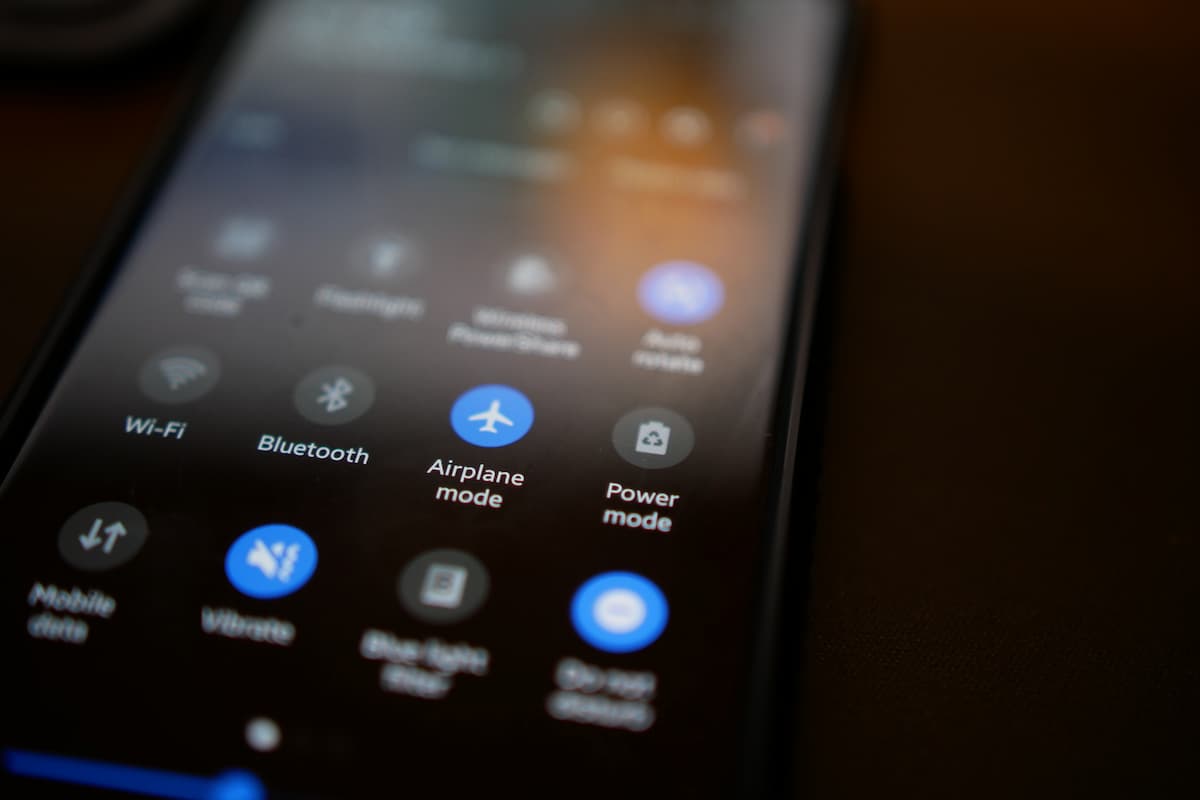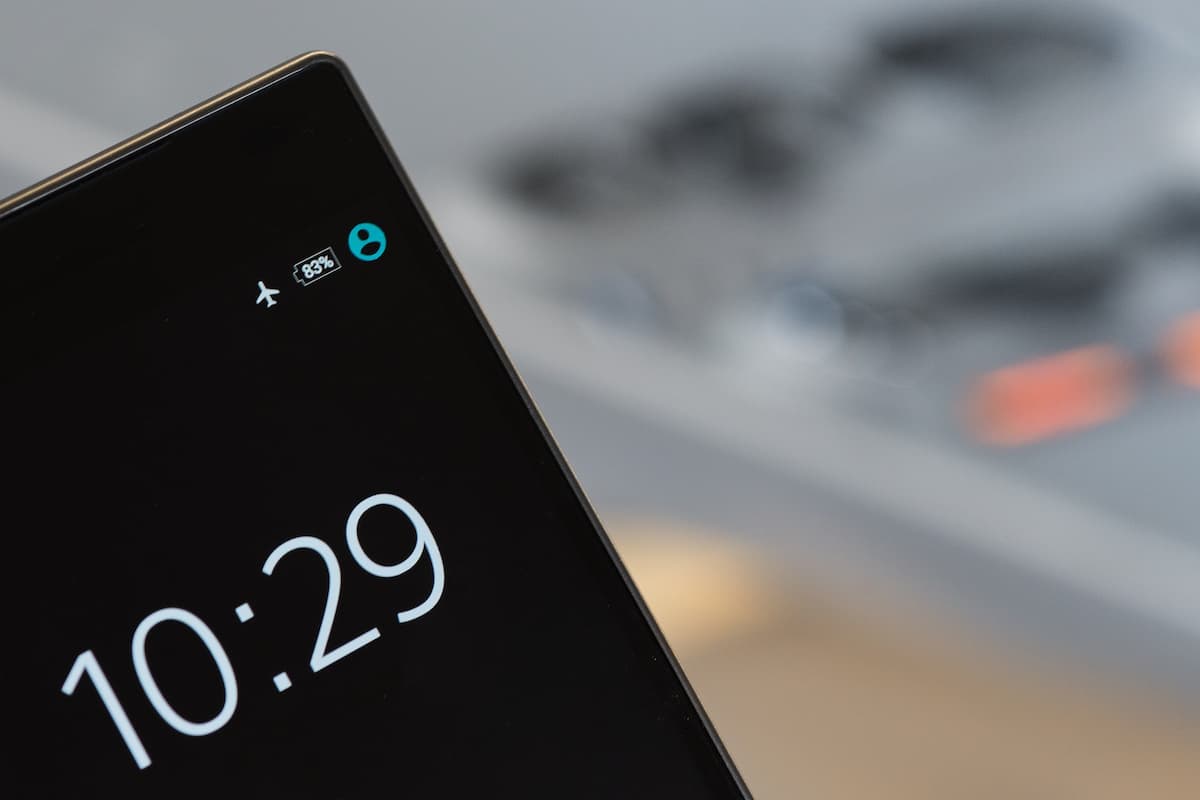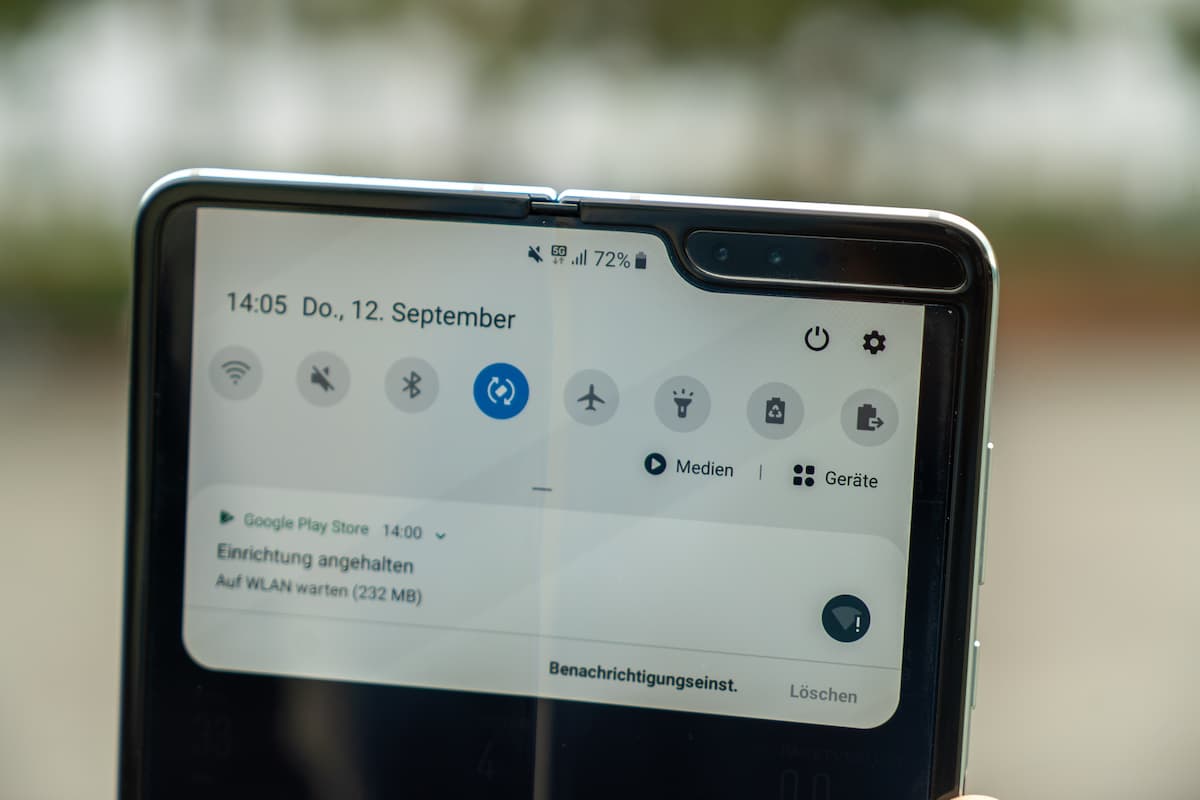What Happens If You Don’t Turn On Airplane Mode?
Personal electronic devices (PEDs) connected to wifi or cellular networks give us nearly unlimited access to anyone anywhere at any time.
However, despite having the world in the palm of our hands, there are still spaces where we’re not allowed to use our phones, tablets, or laptops, including on planes.
Frequent flyers know that just before take-off, they must switch their PEDs to airplane mode per Federal Aviation Administration (FAA) regulations.
If you don’t turn on airplane mode, your cell phone, tablet, or laptop can send signals that interfere with the aircraft’s navigation and communication systems. Devices that connect to mobile networks can also overwork ground-level cell towers, disrupting service. Moreover, if your device keeps trying to ping nearby towers, it quickly drains the battery, and you may not be able to charge it until you land.
This article explains what airplane mode does, why it’s mandatory on a flight, and other ways to connect while on a plane.
How Does Airplane Mode Work?

When passengers switch their cell phones onto airplane or flight mode, it disconnects any communication between the device and cell towers on the ground.
Likewise, airplane mode automatically turns off wifi and Bluetooth connections; however, you can manually activate these features once the device is set to flight mode.
On most smartphones, airplane mode can be activated through the settings panel or control center.
Why Do You Have to Turn on Airplane Mode?
There are a handful of reasons why you have to turn on airplane mode, including legality, safety, and convenience.
It’s the Law
The US Federal Communications Commission (FCC) and Federal Aviation Administration (FAA) have mandated that travelers put their devices in airplane mode to disable any cellular connection during air travel.
In cooperation with these policies, airline crews must advise travelers to turn on airplane mode before takeoff.
Interference With Essential Onboard Equipment
The main reason passengers must use airplane mode is that cellular signals can cause electromagnetic interference with the aircraft’s essential onboard equipment.
For example, there have been cases where pilots have experienced radio interference from mobile phones in their headsets, interrupting their communication with air traffic controllers.
Additionally, an activated cell phone will continuously try to connect with every cell tower the plane flies over.
These non-stop signals have been shown to interfere with aircraft navigation systems.
Cell Towers May Become Overwhelmed
If you forget to activate airplane mode, your phone will try to connect to multiple cell towers simultaneously as you fly over them.
If everyone on your flight is also sending out signals, it can cause radio pollution, overload the networks, and disrupt services on the ground.
Disturbs Other Passengers
The FCC strictly prohibits voice calls while on a flight.
Not only do phone calls cause network interference on the ground, but they also disrupt other travelers onboard.
Quite frankly, no one is interested in a stranger’s one-sided conversation, and it’s much more comfortable for everyone if planes are quieter.
Additionally, a traveler on the phone can miss or interrupt important safety instructions or demonstrations from the flight crew.
Phone Batteries Will Drain Rapidly
If the law, safety, and consideration of others aren’t good enough reasons to use airplane mode, forgetting to turn on airplane mode is also a sure way to drain your battery.
When a device searches for a cell tower from high altitudes, it can amp up its power to locate a signal.
The increased power usage will quickly cause a battery to die, even in battery-saver mode.
Since not all airlines offer in-seat charging, failing to use airplane mode could mean landing at your destination without a functioning device.
Will a Plane Crash if You Don’t Turn on Airplane Mode?

While there is no evidence that cell signals cause plane crashes, it’s still a legitimate risk, especially in older aircraft that haven’t been upgraded to mitigate this kind of interference.
Until the FAA is sure that all personal electronic devices are 100% safe to be used in-flight, current regulations will stay as they are.
Can You Use Wifi or Bluetooth During a Flight?
Even though airplane mode turns off wifi and Bluetooth, both can be enabled afterward.
Most airlines allow passengers to use Bluetooth accessories, such as wireless headphones, at all times; however, the flight crew may ask you to remove your headsets during takeoff and landing.
Many airlines offer wifi onboard their aircraft – some have paid services, while others, like JetBlue, provide it for free.
As wifi on a plane is satellite-powered, it’s often unavailable until the aircraft hits 10,000 ft (3,048 m), and the flight crew will inform you when the network is available.
Do You Need to Turn On Airplane Mode With a 5G Device?

The European Union has enacted legislation allowing 5G-enabled mobile devices to remain active during air travel; however, older model cell phones should still be in airplane mode.
5G policies have not been approved for US airspace, and all devices must be in airplane mode on flights to, from, and within the United States.
Conclusion
The FAA and FCC strictly regulate the use of personal electronic devices onboard aircraft in US airspace and require that all devices that connect to mobile networks (such as cell phones, tablets, and even laptops) are put in airplane mode for the duration of a flight.
Failing to activate airplane mode could interfere with essential aircraft equipment, overwork cell towers on the ground, and drain device batteries.
Nearly all airlines allow the use of Bluetooth or wifi onboard their aircraft, and the flight crew will inform you when it’s safe to activate these features.
While 5G-enabled devices have more flexibility for use in flight, it’s still safer to use airplane mode regardless.